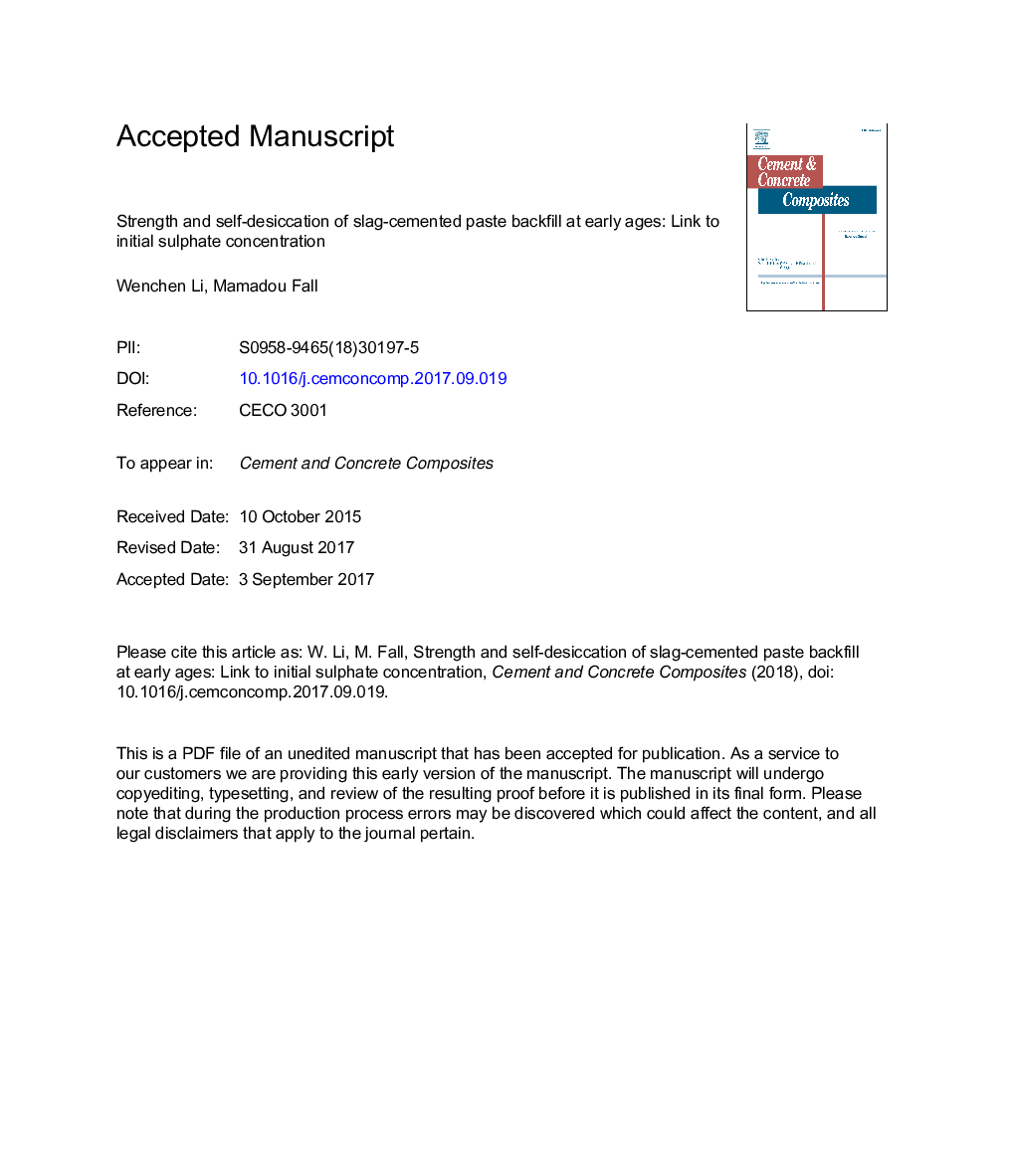| Article ID | Journal | Published Year | Pages | File Type |
|---|---|---|---|---|
| 7883759 | Cement and Concrete Composites | 2018 | 27 Pages |
Abstract
This paper presents the results of an experimental study on the early age strength and changes in the self-desiccation process of cemented paste backfill (CPB) that contains blast furnace Slag (Slag-CPB) and sulphate. Slag-CPB samples with different initial sulphate concentrations (0, 5000, 15,000 and 25,000â¯ppm) are prepared and cured in well-sealed molds at early ages (1, 3, 7 and 28 days) in room temperature (â¼23â¯Â°C). Mechanical and hydraulic conductivity tests are performed on the samples, in which the suction and electrical conductivity of the Slag-CPB specimens are monitored. Furthermore, microstructural analyses are conducted on the Slag-CPB and slag-cement paste samples. The results show that sulphate can have a positive or negative effect on the early age strength and self-desiccation of Slag-CPB, i.e., cause an increase or decrease in strength and acceleration or reduction in the amount and rate of self-desiccation, depending on the initial sulphate content and curing time. This study also shows that an understanding of the positive or negative effect of sulphate on the early strength and self-desiccation of Slag-CPB is critical for designing cost-effective CPB structures with high early strength, speeding up mining cycles or assessing the deterioration of CPB caused by high sulphate attack to ensure safety in mining.
Related Topics
Physical Sciences and Engineering
Engineering
Industrial and Manufacturing Engineering
Authors
Wenchen Li, Mamadou Fall,
